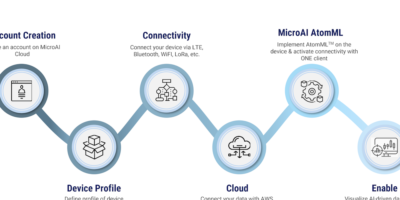With the capability to bring desktop-quality visuals to mobile applications, Imagination Technologies announces the IMG CXT GPU IP which uses Imagination’s PowerVR Photon ray tracing architecture. It has up to 50 per cent more compute and geometry performance per core compared to BXT.
By adding Photon hardware ray tracing, the IMG CXT advances GPU IP, says Imagination, delivering performance for games and other graphical use cases. The Photon ray tracing architecture brings desktop-quality visuals to mobile and embedded applications, says the company. It imitates how light behaves in the real world, making it possible to create 3D scenes that are “near indistinguishable from real life”. Ray tracing is relatively recent to desktop PCs and gaming consoles, but IMG CXT’s Photon architecture allows mobile developers and gamers to take advantage of its rendering technology with full hardware acceleration. Photon brings ray tracing to mobile, gaming, AR, desktop, data centre, cloud and automotive designs.
Imagination has identified six levels of ray tracing (from Level 0 to Level 5). The Photon architecture inside IMG CXT is Level 4, enhancing ray tracing performance and efficiency to deliver a desktop-quality experience for mobile gamers and developers.
The IMG CXT-48-1536 RT3 core features three instances of the ray acceleration cluster (RAC), offering up to a total of 1.3Gray per second. This delivers photorealistic ray traced shadows, reflections, global illumination, and ambient occlusion, with high frame rates, in a mobile power budget, says Imagination.
For rasterised graphics performance, IMG CXT has 50 per cent more compute, texturing and geometry performance than Imagination’s previous GPU IP. Its low power superscalar architecture delivers high performance at low clock frequencies for exceptional FPS/W efficiency, while Imagination Image Compression (IMGIC) reduces bandwidth requirements.
The Photon architecture can be scaled to cloud, data centre and PC markets using Imagination’s multi-core technology. This can generate up to 9TFLOPS of FP32 rasterised performance and over 7.8Gray per second of ray tracing performance, offering up to 2.5 times greater power efficiency than Level 2 or 3 RTLS ray tracing.
IMG CXT can also be used for automotive human machine interface (HMI) platforms. It enables the photo-realistic representation of vehicles for surround view and dense urban areas for sat-navs, as well as mixed-reality heads up displays (HUDs), digital speedometers and other information displays. It can also deliver premium in-car gaming and entertainment experiences while occupants wait for the vehicle to charge.
The PowerVR Photon architecture features the RAC, a low power, dedicated hardware GPU block which accelerates and offloads more of the ray tracing computations from the shader cores compared to less-efficient Level 2 RTLS architectures.
The RAC consists of the ray store, ray task scheduler and coherency gatherer and is closely coupled to two 128-wide unified shading clusters (USCs) featuring high-speed dedicated data paths for the most efficient and lowest power ray traced deployment. The ray store keeps ray data structures on-chip during processing, providing high-bandwidth read and write access to all units in the RAC, avoiding slowdowns or power increases from storing or reading ray data to DRAM. The ray task scheduler offloads the shader clusters, deploying and tracking ray workloads with dedicated hardware, keeping ray throughput high and power consumption low. The coherency gatherer unit analyses all rays in flight and bundles rays from across the scene into coherent groups enabling them to be processed with much greater efficiency.
These features combine to deliver greater and more consistent ray tracing performance for developers than current solutions on the market, says Imagination, for advanced effects when rendering complex surfaces such as cars, characters, and terrain, to create more detailed environments than previously possible.







